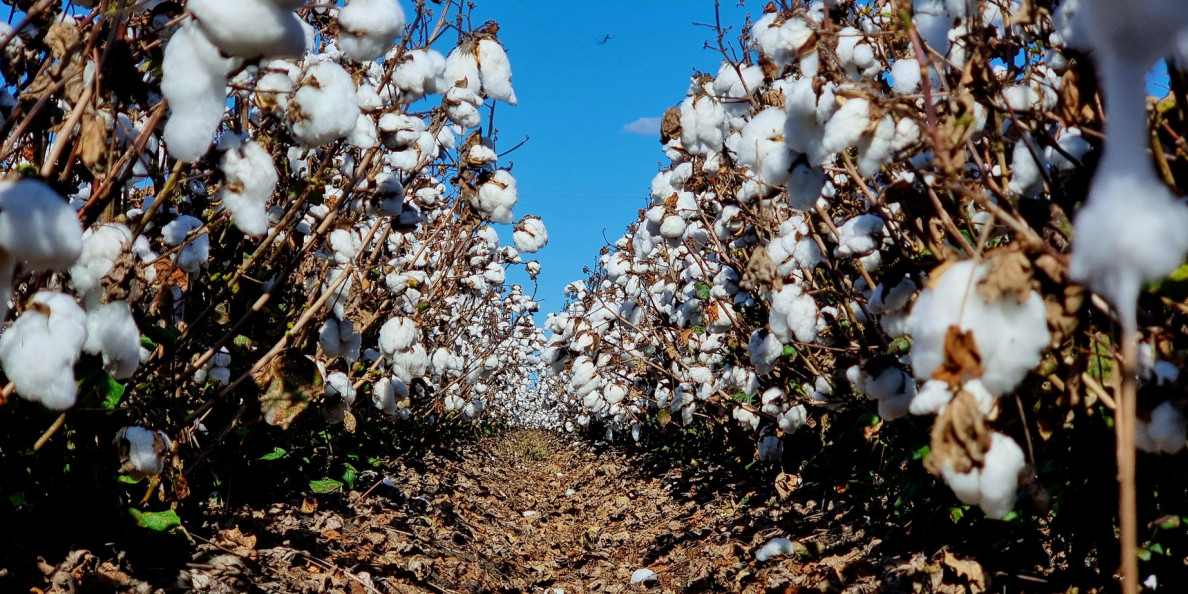At a Glance
- Cotton plants go through multiple stages in the 130 to 160 days taken for them to grow
- An annual cotton variety may help plants use more energy to make higher-quality lint, leading to more profits for grower
Clemson University researchers are determining how to develop a higher-yielding, better-quality cotton by altering plant growth habit and form.
Led by molecular biologist Sachin Rustgi, the researchers are looking at how regulating certain genes can transform cotton from a perennial plant to an annual plant, as well as genes that control the number of bracts, small leaf-like structures that protect the plant’s floral buds, or squares, against bollworms and other pests.
“Right now, cotton is planted and grown as an annual plant, but it is really a perennial plant,” said Rustgi, a scientist in the Advanced Plant Technology Program at Clemson’s Pee Dee Research and Education Center (REC) near Florence, South Carolina. “If we can develop an annual variety for cotton, we believe South Carolina farmers will benefit by seeing a higher yielding cotton with higher quality fiber.”
The researchers are looking at how plants use environmental and hormonal cues to transition from vegetative growth to reproduction. Reproductive development begins 4-to-5 weeks after planting when squares form. During this stage, bracts surround the squares.
Typical cotton plants include three bracts. A fourth bract can form on some cultivars under certain conditions. This extra bract is undesirable because it can provide openings and allow thrips and other pests access to the squares.
During this study, researchers injected the tobacco rattle virus into cotton plants to finetune the balance between vegetative and reproductive growth. The virus was used to manipulate a cotton gene associated with bract development to help prevent a fourth bract from appearing.
“When injected into a cotton plant, the tobacco rattle virus ‘knocks down’ the gene associated with the fourth bract and just three bracts are produced,” Rustgi said. “Compactly packed bracts make it more difficult for insects to attack the bolls.”
The tobacco rattle virus also was used to manipulate a cotton gene associated with plant growth.
Perennial crops usually grow in environments that may have limitations such as short growing seasons or dry climates, or where plants’ ability to access resources may be limited. Perennial plants store reserves such as carbohydrates, fats and proteins to use for regrowth. In many plant species, this process produces root and shoot buds that can grow into new plants. This is called “vegetative reproduction.”
Because of its growth habit, cotton continues to add vegetative growth at the same time as reproductive development, diverting the plant’s energy away from lint and seed production. The researchers believe an annual cotton variety will help cotton plants use more energy to produce higher-quality lint resulting in more profits for growers.
The hope is for the results of this study to lead to breeding methods to develop annual-type cotton plants.
Upland cotton cultivars used in this study are Coker 201, CABD3CABCH-1-89, ARKOT 8102, HOPI MOENCOPI, SPNXCHGLBH-1-94, CAHUGLBBCS-1-88, TAMCOT SP-23 and GSA 74.
In addition to Naveed, other researchers collaborating with Rustgi on this project include Clemson graduate student Seyi Toyinbo and Clemson technicians Nitant Gandhi and Sarah Rawlins. Mike Jones, Clemson Extension cotton specialist, and Todd Campbell, USDA-Agricultural Research Service research geneticist, also are involved.
This research is supported by the South Carolina Cotton Board and Cotton Incorporated.


